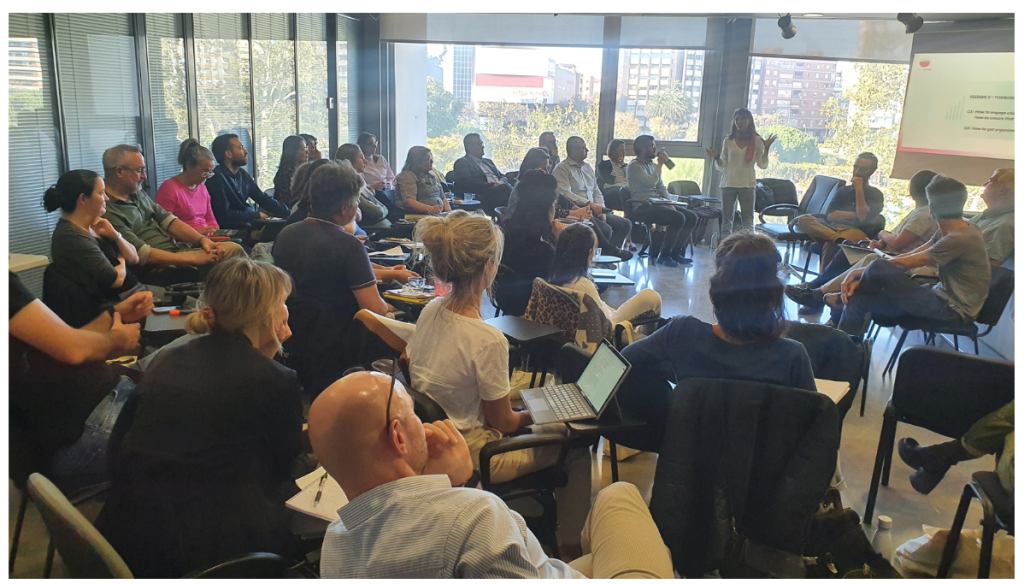Do you FEEL post-growth scarcity?
A study visit in Valencia highlighted the importance of unlocking human power to respect planetary boundaries
On November 7-8, 35 people from partners and stakeholders of the FEEL project, representing 8 countries, gathered in the Spanish city of Valencia to discuss the business case for frugality.
Governance and stakeholder engagement were central to the discussions, with project partners inviting their local stakeholders to join the study visits organized by the Valencia Clima and Energy Agency.
Two provocative speakers set the stage for the discussions: Dr. Sofia Greaves from the Post-growth Innovation Lab of Vigo University challenged partners on post-growth urban planning, while Kris de Decker from Low-tech Magazine shared his radical reflections on potential low-tech solutions in cities, such as human power. Even though the idea is not feasible and rather provocative, since Meadows’ ‘Limits to Growth,’ we have known for decades that our current pace of growth is well beyond our planet’s limits — yet our cities are still designed for growth and long-distance commuting.
What would post-growth urban planning look like?
How can we convince citizens that sufficiency is needed? How to get them on board of this much-needed revolution? Here are our experts’ tips:
1. (RE-)CREATE MIXED-USE AREAS – satisfying multiple needs; re-transforming abandoned neighborhoods for and by local communities.
2. CIRCULARITY – supported by local coins.
3. ACTIVISM – fostering bottom-up initiatives with top-down support.
4. POSITIVE FRAMING – linking sufficiency with beauty and pleasure to make it more appealing. Cultural programming and food are great means for that.
5. MOBILITY TRANSITION – even though this is the greatest issue in our cities, several good practices prove that the ‘mama-taxi traffic jams’ around schools can be improved and low-emission zones within the city center can be created.

Get inspired: the example of Valencia
Valencia explored significant steps towards sufficiency in the city. Through tactical urbanism, using low-cost, easily implementable measures, the La Petxina project has transformed a formerly heavily jammed school and residential area into a lively low-traffic zone. This junction among four blocks of sets has seen a radical transformation into an area where people are now happy to cycle and walk, consequently reducing emissions and noise.
Moreover, Valencia has developed bike highways and related services and facilities for bikers to make their ride more attractive. The result is a clear growth of bike lovers. Valencia’s local Clima and Energy Agency provides its residents with three local offices (with plans to open further offices by 2030) and strengthens the local energy transformation through people’s mindset.
As we contemplate post-growth urban planning, the lessons learned from Valencia underscore the need for innovative solutions, community involvement, and a shift towards sustainable practices. The challenge ahead is pursuing attractive, sustainable, and feasible solutions for future-proof cities.
Discover the Frugal living concept in this short video
